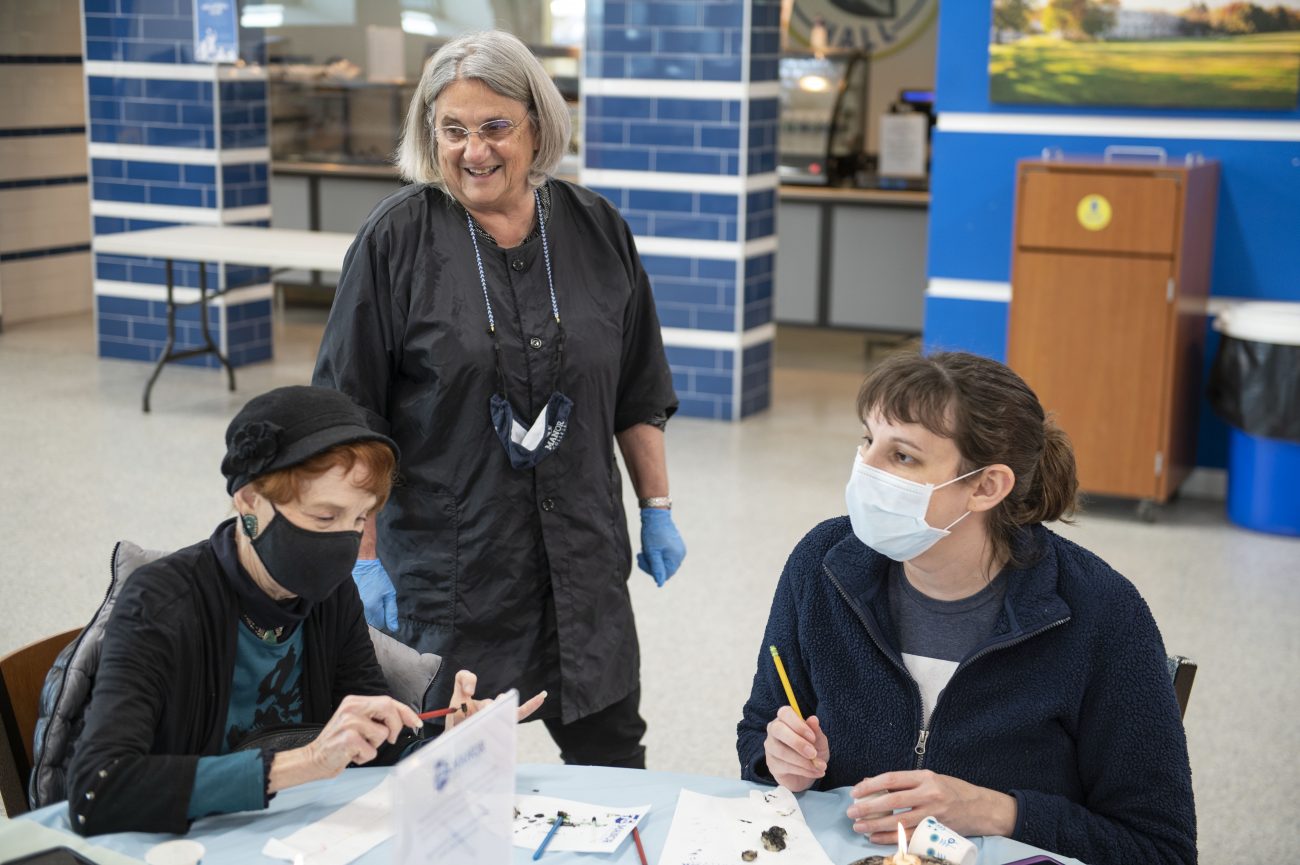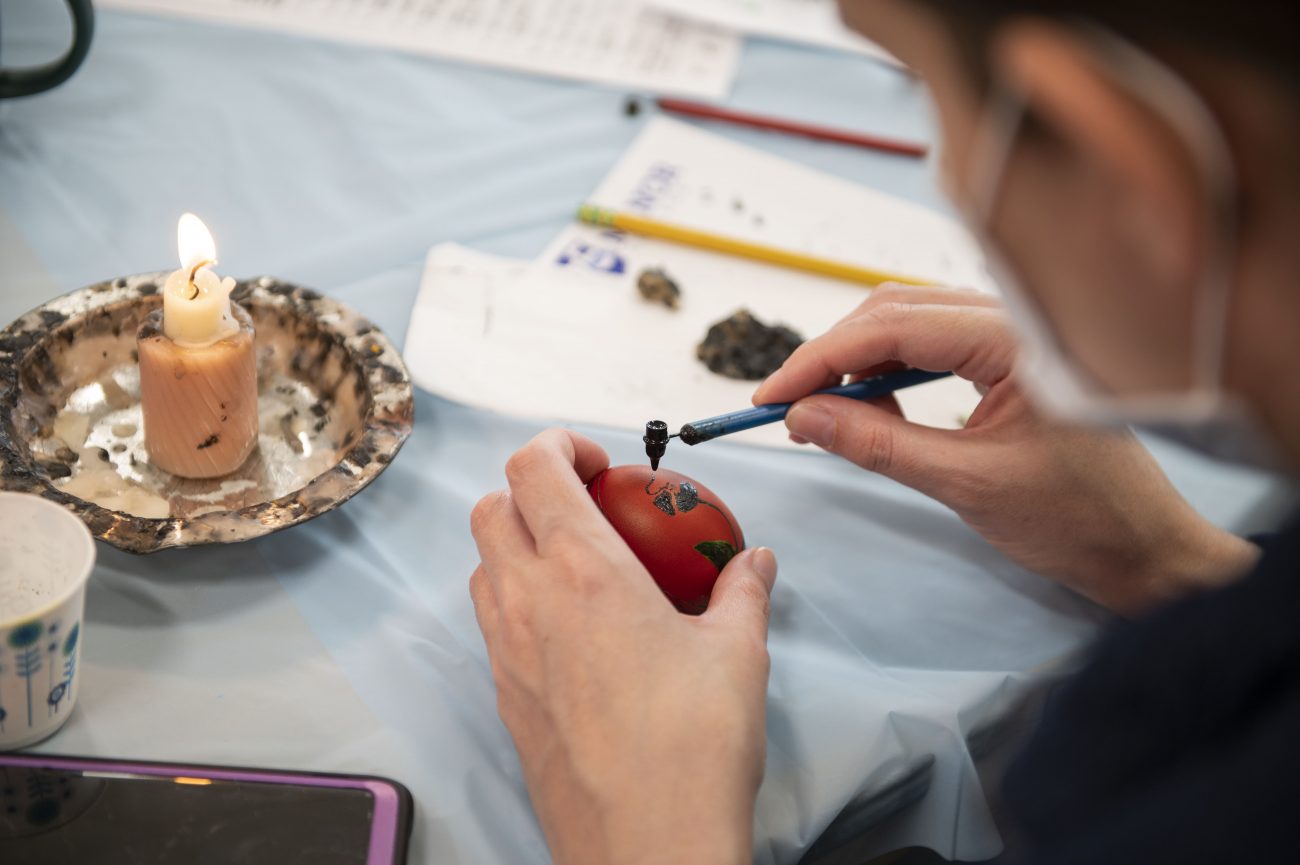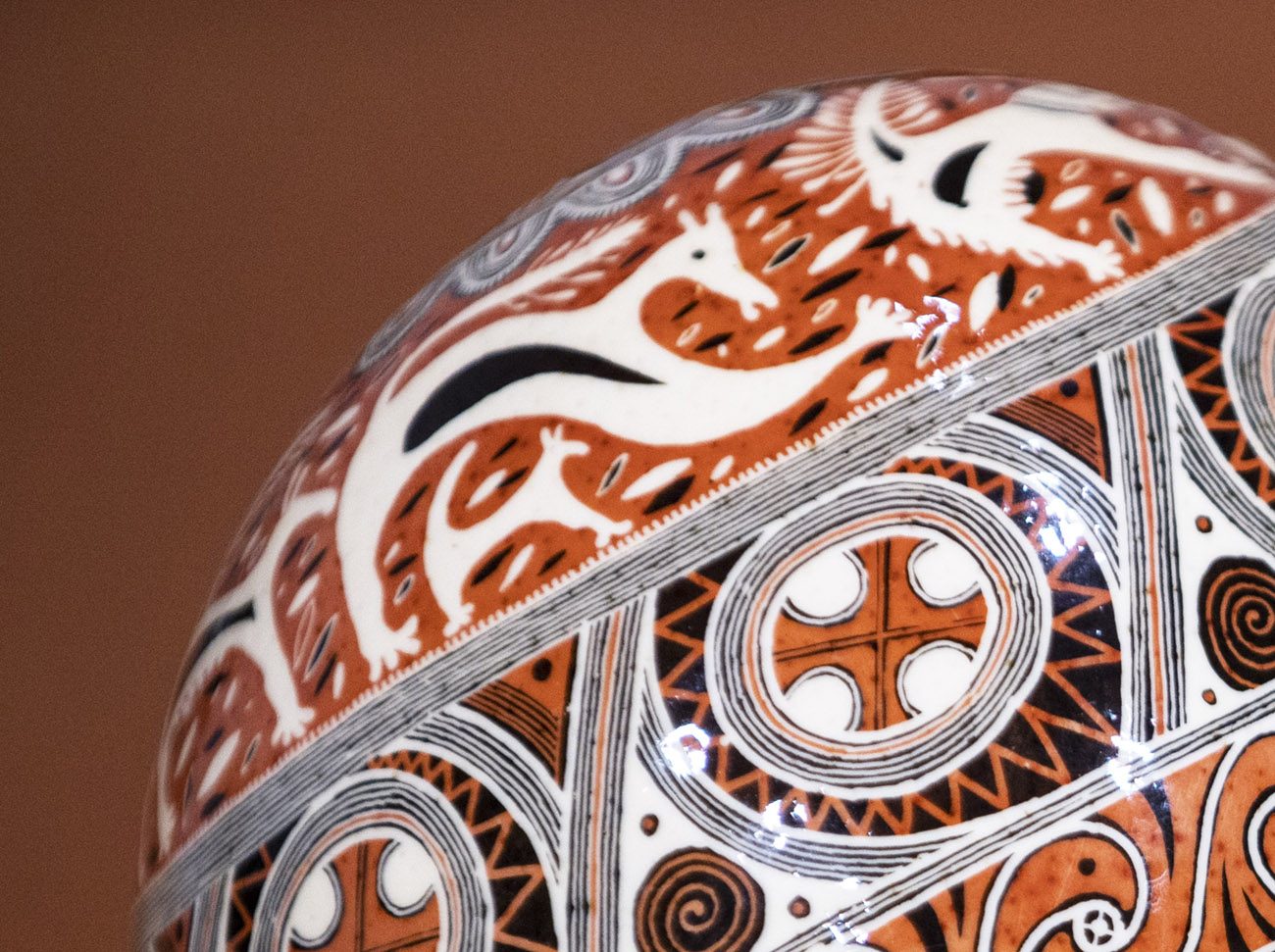A beloved Easter tradition is providing fresh hope for local Ukrainians as Russia wages a brutal war upon their native land.
Throughout the region, Ukrainian communities have been making “pysanky,” elaborately decorated Easter eggs whose designs are rich with symbols of salvation and new life.
Traced in beeswax with a stylus called a “kistka” and colored with aniline dyes, psyanky have taken on even deeper significance this year, with many organizations holding pysanky gatherings to raise awareness of and humanitarian aid for Ukraine.
[hotblock]
On April 1, Manor College in Jenkintown hosted “Make a Pysanky for Ukraine Day,” led by Chrystyna Prokopovich, curator of the school’s Ukrainian Heritage Studies Center, the museum of which contains more than 200 pysanky, most made by members of the college’s community.
Prokopovich said according to the custom’s ancient history, psyanky (plural for “psyanka”) are a force for holding evil in check.
“There is a legend that says an evil monster is chained up in a cave somewhere, and every year he sends out his little henchmen to see how many pysanky have been made,” she said. “The fewer that are made, the looser his chains get. The more that are made, the tighter his chains get.”
If no psyanky are made, she said, “he goes completely free and does what he wants.”
The legend evokes the current horror of the latest Russian invasion of Ukraine, which began Feb. 24 and has since seen thousands killed and more than 10 million displaced.

Chrystyna Prokopovich, curator of the Ukrainian Heritage Studies Center at Manor College, guided participants in an April 1 “Pysanky for Ukraine” event. (Manor College)
In recent days, gruesome discoveries have emerged of mass graves and summary executions, along with survivor accounts of torture and rape at the hands of Russian troops.
An April 12 report by the Organization for Security and Co-operation in Europe found “clear patterns of international humanitarian law violation by Russian forces” in Ukraine.
Such findings are only “the tip of the iceberg,” said Archbishop Borys Gudziak of the Ukrainian Catholic Archeparchy of Philadelphia, metropolitan archbishop for Ukrainian Catholics in the U.S., who pointed to “more occupied and besieged territories of Ukraine where it can be expected much more torture and death will be exposed.”
Amid such suffering, the “meditative” process of creating pysanky invites participants to reflect on goodness and renewal, said Prokopovich.
[hotblock]
Pysanky makers traditionally made the sign of the cross and whispered “God help me” prior to their work to ensure “the profound religious meanings” of the designs would “come to life,” she noted.
“There’s one designed called the ‘40 triangles,’ and for each triangle you said a prayer,’” Prokopovich said.
The craft has pre-Christian roots, she said, but has always used symbols that affirm life and prosperity.
“Pysanky is thousands of years old, and it was used to welcome spring,” said Prokopovich. “Once it was incorporated into Easter customs, some of the symbols changed. What used to be the four corners of the earth became the cross. Grapes, which (represented) a good harvest, became the growing church.”
Each region in Ukraine “had its own influence” on the craft, she said – but under Soviet communism, pysanky, along with other Ukrainian folk arts and the Ukrainian language itself, was suppressed.
“This was one of the arts we all grew up with … but it was very much frowned upon by the communist government,” said Prokopovich. “So you couldn’t make pysanky and brag about it in school, that’s for sure. And you couldn’t go to church,” she added, noting the Soviet ban on the Ukrainian Greek Catholic Church.
But pysanky – the name for which comes from the Ukrainian word for “writing” – sends “a message” of encouragement, Prokopovich said.
“You’re actually writing … with the wax; you’re writing a Hallmark card for somebody,” she said. “Pysanky was kind of a dying art in Ukraine, but it’s very much alive again.”

A woman uses a stylus called a “kistka” to trace designs in wax on an egg as part of Manor College’s April 1 “Make a Pysanky for Ukraine” event. (Manor College)
PREVIOUS: Mask mandate returns to city’s Catholic schools
NEXT: Video series shows how to present Passion, without blaming Jews




Share this story